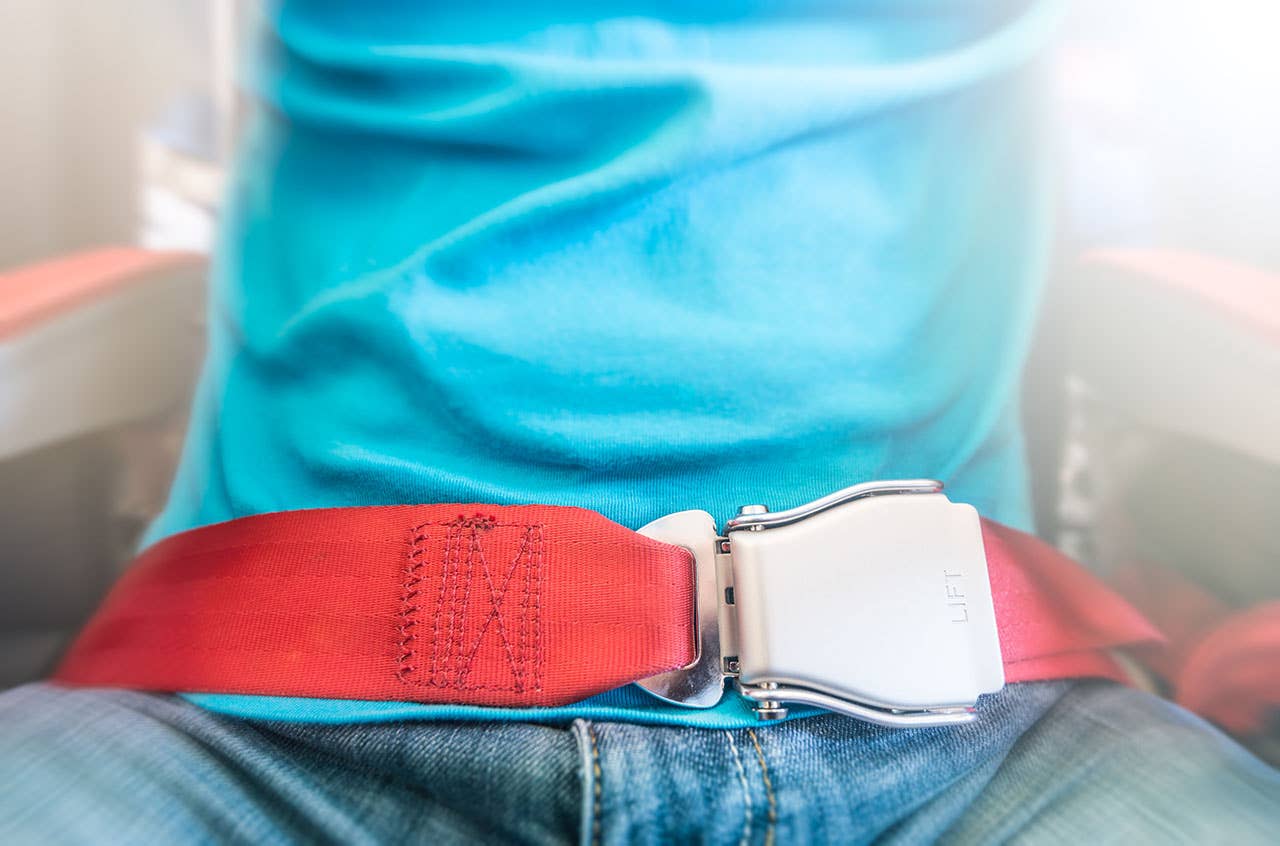The Evolution of Seatbelts on Planes
These humble straps save countless lives. They were once controversial, though.

Though not nearly as flashy as inflight weather radar or a ballistic parachute system, the humble seatbelt is probably the most critical safety device installed in any aircraft.
After all, seatbelts put the "S" in SAFETY for the preflight passenger briefing. In the early days of aviation, many pilots died when ejected from their planes or from impact against the cabin interior.
It's hard to believe that the lowly seatbelt---a routine checklist item for every takeoff and landing---was once the subject of tremendous controversy. How much do you really know about this life-saving device?
Because we take for granted that they will always be there, seatbelts are often overlooked, even neglected. Taking the extra time to inspect periodically and use your seatbelts and harnesses correctly can protect you from serious injury in turbulence or make the difference between life and death in an emergency.
Don't forget to properly brief your passengers about the correct operation of seatbelts, as well as when they must wear them, on every flight. You never know when you are going to need them. As Bette Davis famously warned in the 1950 film All About Eve: "Fasten your seatbelts. It's going to be a bumpy night."
First pilot to wear a seatbelt: Lt. Benjamin Foulois, U.S. Signal Corps
When: 1910
Motivation: Survived one crash and almost thrown from the plane on another flight
First aircraft to have a seatbelt installed: Wright Model A Military Flyer, Signal Corps No. 1
First seatbelt material: 4-foot-long leather cinch acquired from the cavalry
Requirement for seatbelt use and passenger briefing: 14 CFR 91.107
When to wear: Passengers---taxi, takeoff, landing
When to wear: Pilots---whenever at crewmember stations
Exceptions:
Parachutists on floor berth
Children under age 2 seated on adult's lap
Free balloon gondolas
Airships (type certificated before Nov. 2, 1987)
Buckle types: Lift lever, rotary, push button
Seatbelt webbing materials: Nylon or polyester
Types: Two-point (lap belt), three-point, four-point and five-point harnesses
Harness straps: Lap belt, shoulder belt, crotch belt
Inertia reel: Ratchet gear and centrifugal clutch lock belt when force applied
Hugh DeHaven, aviation safety pioneer: Survived midair collision in 1917; inventor of three-point safety belt
1951: Glenn Curtiss advocates for seatbelts to prevent ejection
1920: Seatbelts appear in civilian aircraft
1929: Optional use at airlines
1940 and 1950s: Improved safety or increased danger debate
1972: Required use by FAR
1986: Shoulder harnesses required in all new small aircraft
Controversial accident: British European Airways, Paris to London
Date: Oct. 31, 1950
Location: London Heathrow Airport
Aircraft type: Vickers VC-1
Scenario: Overshot landing in bad weather
Fatalities: 28
Investigation: Celebrity medical examiner Dr. Donald Teare published report that seatbelts caused fatal injuries
Vindication: Dr. Eugene DuBois, on behalf of Crash Institute Research program, debunked Teare's flawed conclusions, vindicating seatbelt safety
Notable accident: Aloha Airlines 243
Date: April 28, 1988
Aircraft: Boeing 737-297
Damage: Top section of fuselage torn off
Survivors: Passengers buckled in their seats
Sole fatality: Flight attendant C.B. Lansing, who was standing in the aisle
Notable death: Harriet Quimby (first U.S. female pilot and first woman to fly across the English Channel) died in 1912 when she was thrown from her aircraft during an airshow
Reduction of major injuries in general aviation accidents: 88%
Reduction of fatalities in GA accidents: 20%
Priority checklist item: Preflight, landing and emergency
Required inspection: Annual and 100-hour
Do you want to read more Plane Facts columns? Check out "How Far Can Airplanes Fly?" here.

Subscribe to Our Newsletter
Get the latest Plane & Pilot Magazine stories delivered directly to your inbox






